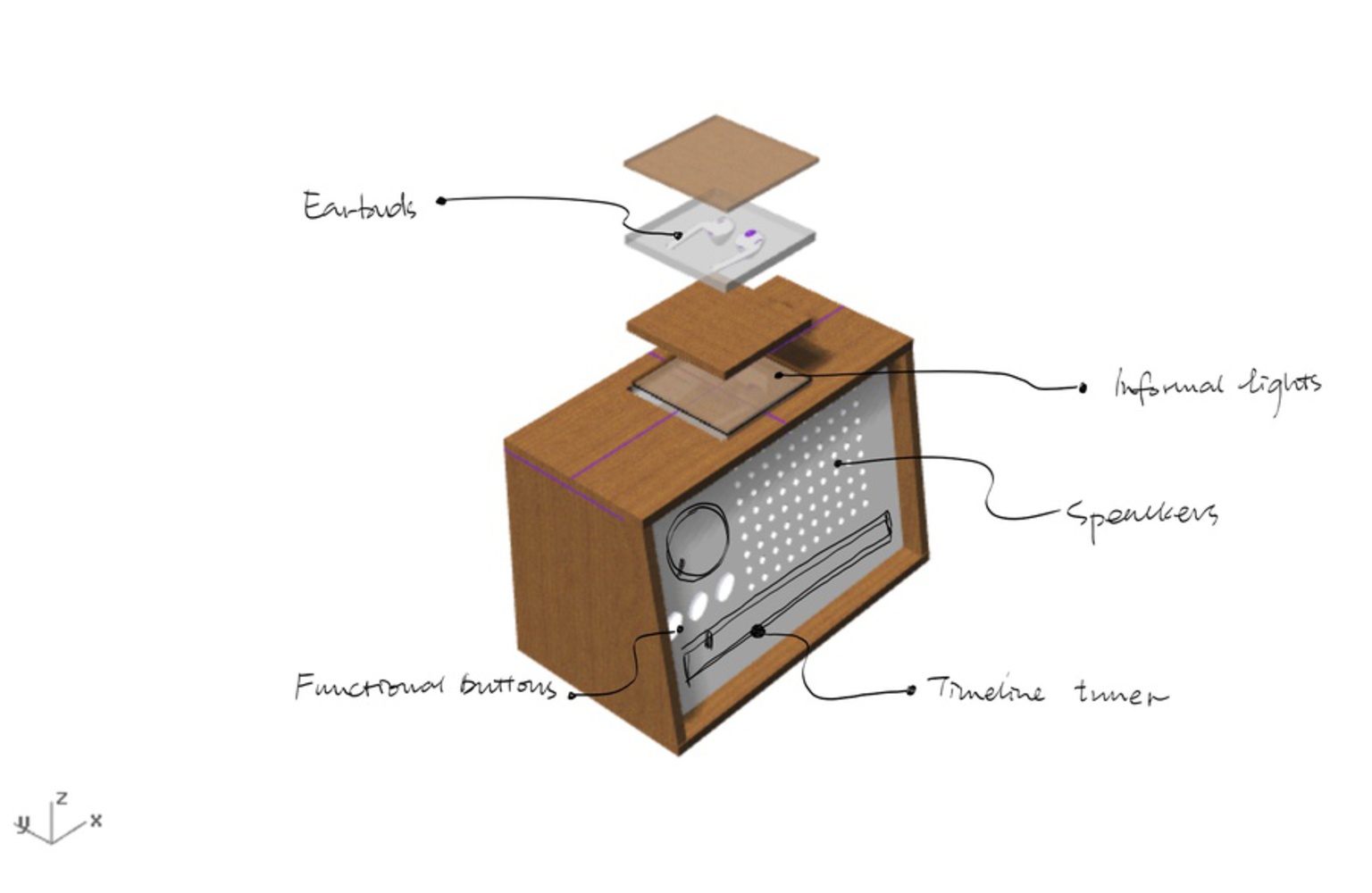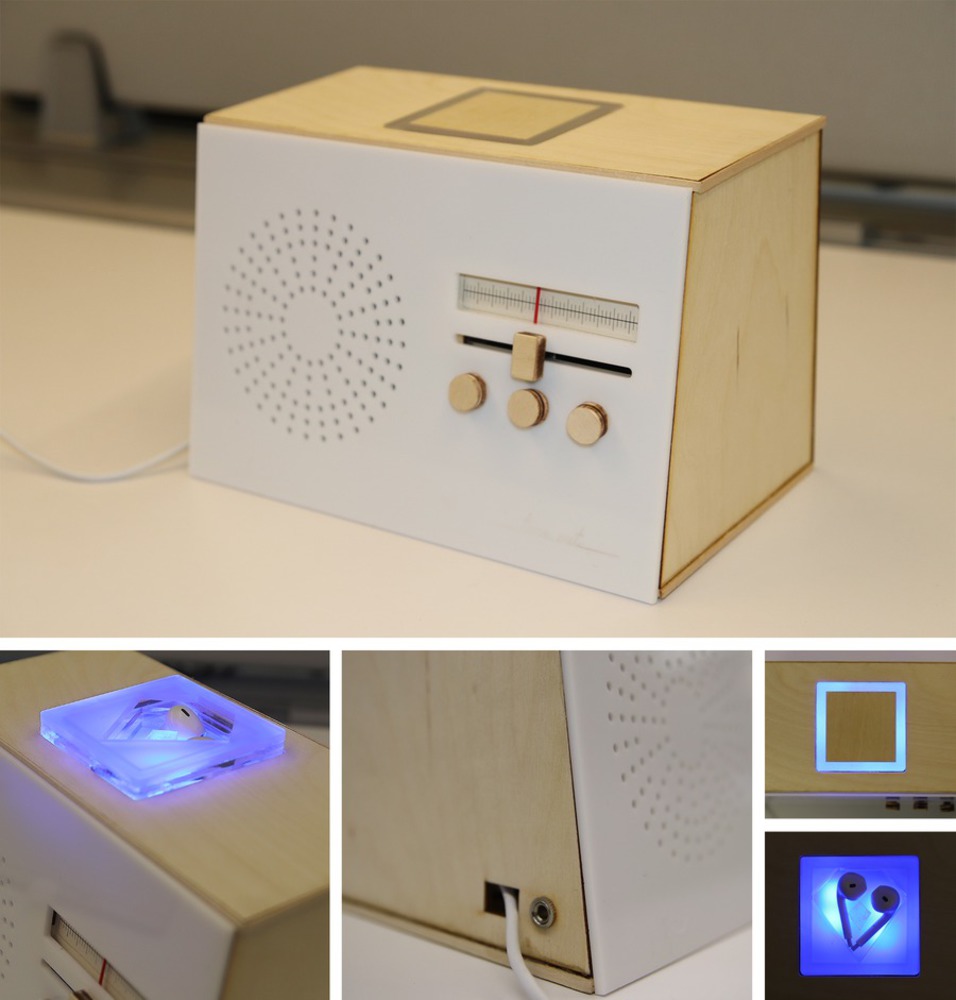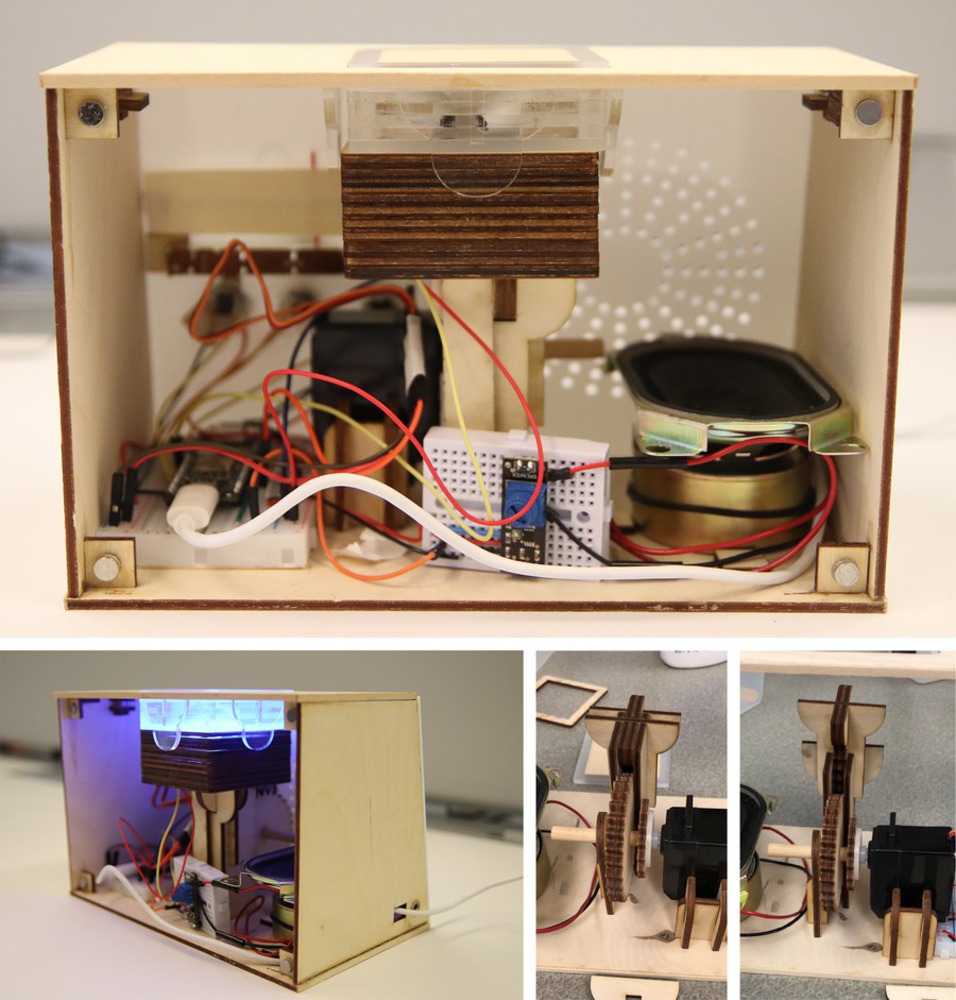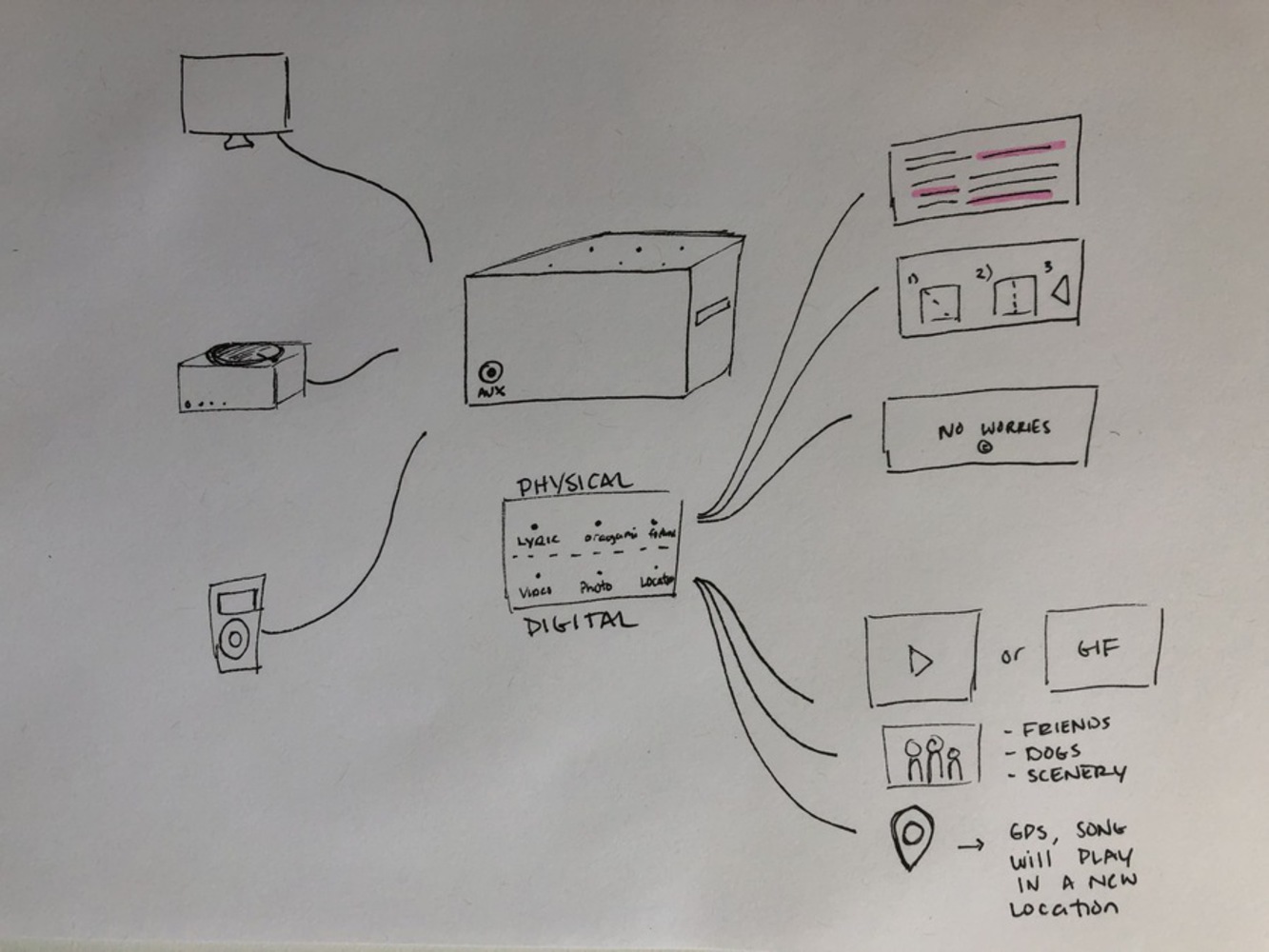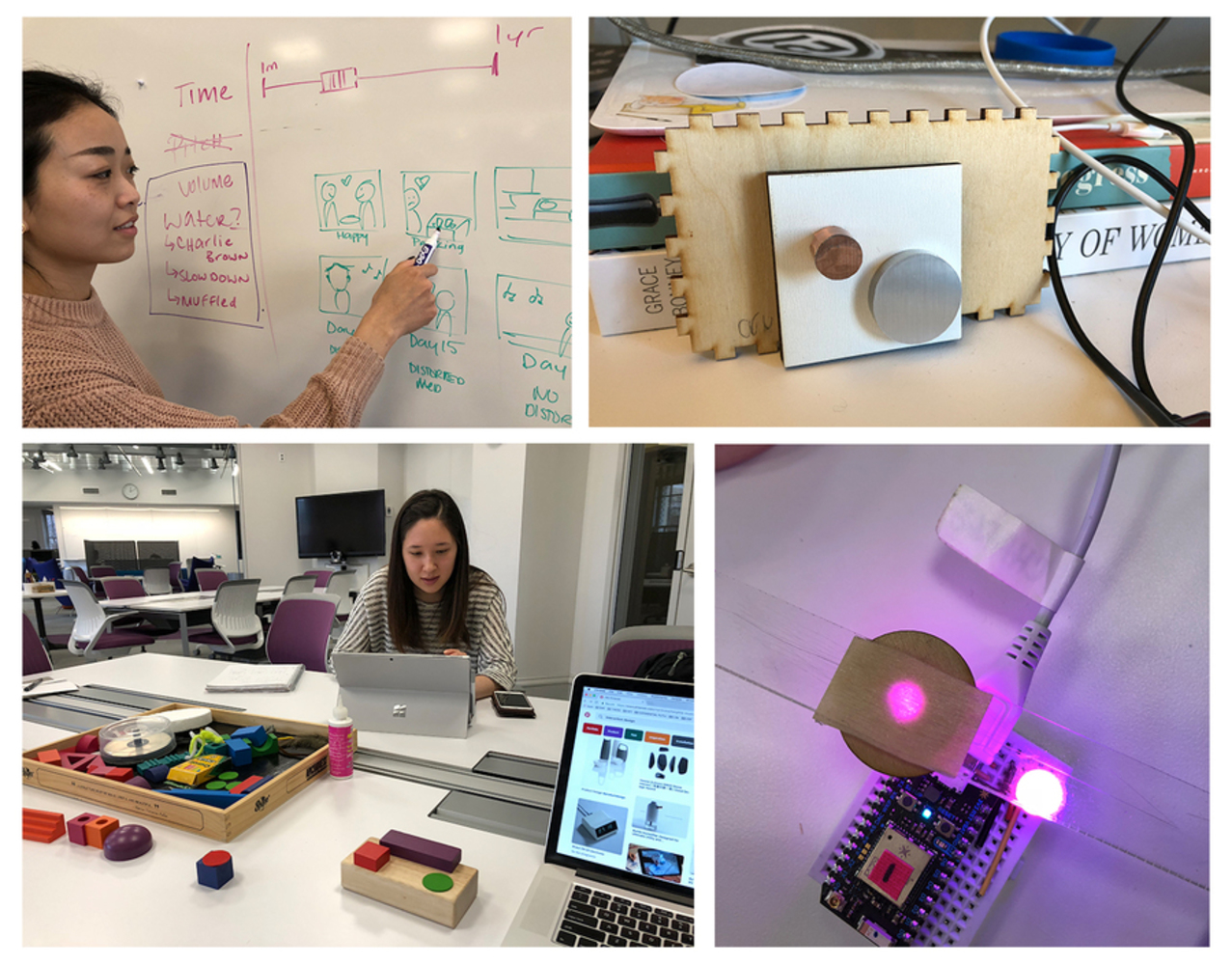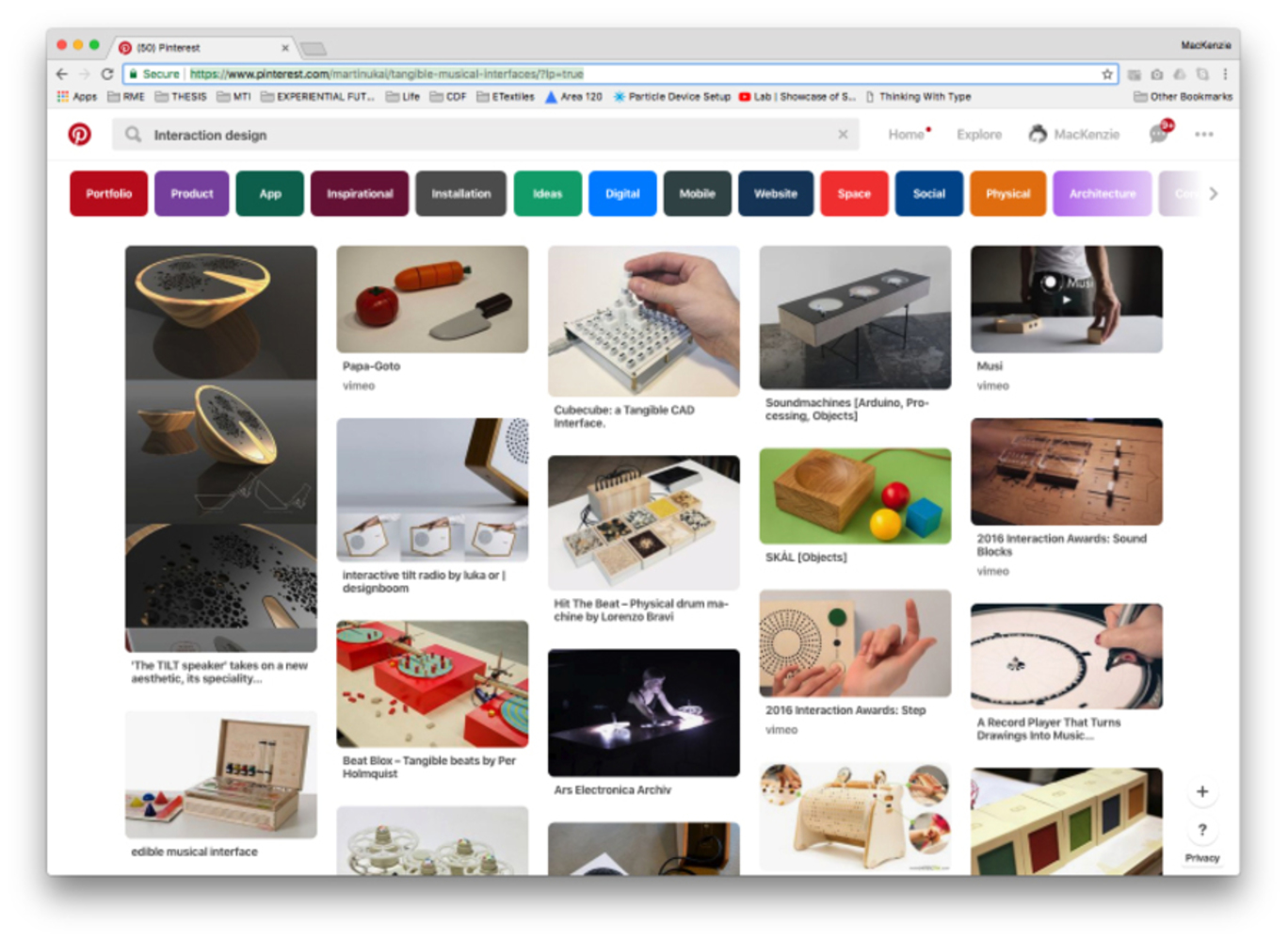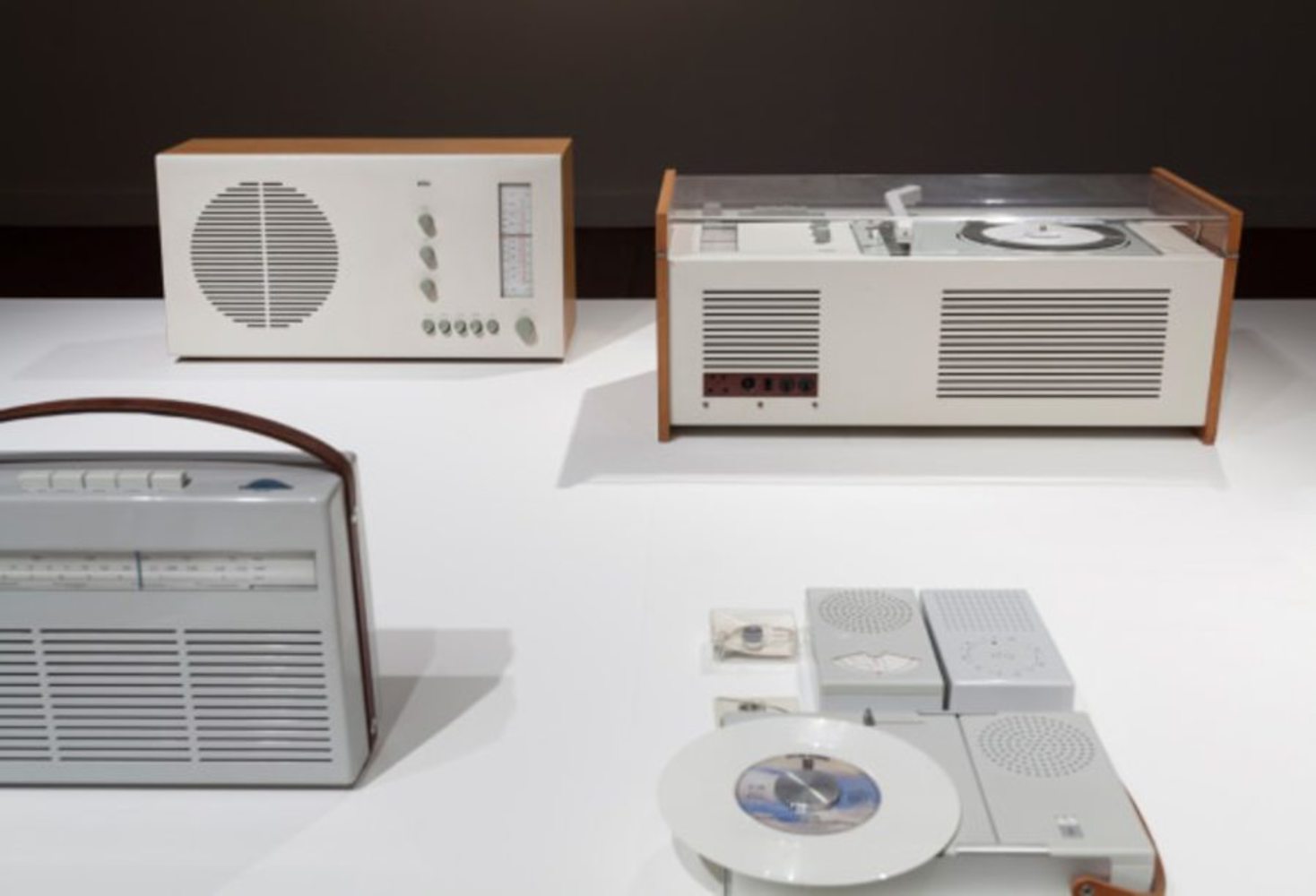Precedents
The rise of technological innovations has made access and storage of digital files faster a more reliable. The music industry has particularly expanded through such advancements in the digital realm. Where there were once CD's , cassette tapes and other forms of holding a copy of a song tangibly, the storage of music now comes in less tangible forms such as applications and sound clouds. Where there was once a musician playing music at a specific restaurant, the musician now records in a studio where the music is broadcasted internationally to any location at any time. Music is something that is often overlooked, but continues to exist subconsciously as it is introduced throughout the day in various occasions. A song associated with a particular environment causes one to remember the feelings and visual qualities of the site as a schema in the brain. A similar event occurs during interactions and relationships with one another. Music is one of several maps our brain uses to perceive and event or relationship. However, in the case of a relationship, when all goes wrong, or ends, how does one cope with the situation, if one of the maps used to remember the significance of the relationship is not something that an individual can destroy, alter or pass by. In an age where the increase in the use of digital files to encapsulate memories becomes more prominent, how can one undergo a ritual of forgetting, when the artifact holding the memories to forget are not of a domain that the individual has control of?
Some of the prior work that we saw that helped influence the design include not specific projects that sought to address the situation, but rather a mixture of existing devices that are already used in the public to distort, mute or change what we hear. For an instance, earbuds already change what we should be hearing in a location by inputting another sound in our head. Headphones for musicians change the sounds of audio input to help them look at the different ways a song can be composed. Noise cancelling headphones, such as those produced by Bose, measure the frequency of incoming waves and upon identifying the value of the wave, sends a wave out that is 180 degrees "out of phase" of the wave that is coming to our ears. These different types of sound altering devices that already exist in society inspired us to create a sound device that could hypothetically use such technology to help an individual take a digital music file and alter it to help them cope with their own needs. Since a song cannot be altered and destroyed, to be able to have a device where one would be able to alter a song to their own needs was something that we thought would help in addressing a ritual of forgetting with a non-tangible artifact, music.
